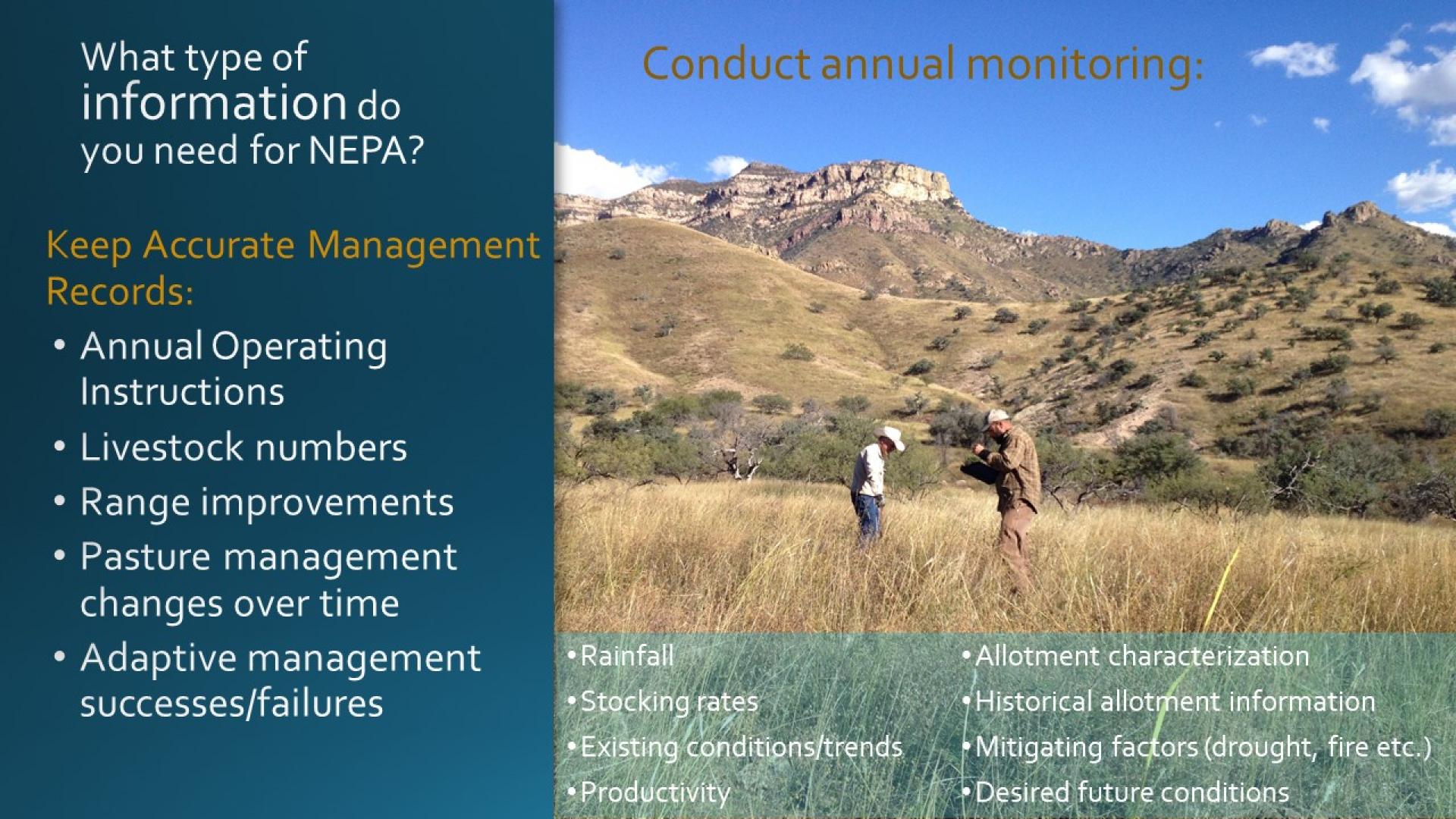
- Body
The purpose of the NEPA process is to understand and evaluate the environmental impacts of activities carried out by the federal government. To complete the NEPA process, agencies need data to evaluate environmental impacts. Ranchers can do three things to help agencies conduct NEPA evaluations:
- Establish good relationships with local agency personnel involved in the management of grazing allotments. The NEPA process should not be adversarial. A strong, trusting relationship between ranchers and agency staff can help the process run smoothly and ensure both the agency and permittees understand one another’s views and needs. Ranchers should look to establish these relationships before the start of a NEPA process.
- Keep accurate records on your management. Your records can help with development of existing conditions information about your allotment. The US Forest Service or BLM will have its own records, but if you maintain accurate annual records of Annual Operating Instructions, livestock numbers, range improvements, management changes over time, etc., your records can help to fill in gaps in agency records.
- Conduct annual monitoring. Monitoring should be carried out regularly by the US Forest Service and BLM. Participating in this monitoring is a great way to build strong working relationships with agency personnel. If the federal agencies are not conducting regular monitoring on your allotments, ask them to start. You can also conduct monitoring yourself. While monitoring takes time, it has multiple benefits. You will understand the impacts of your management better and the data can help provide an accurate picture of your allotment for NEPA.